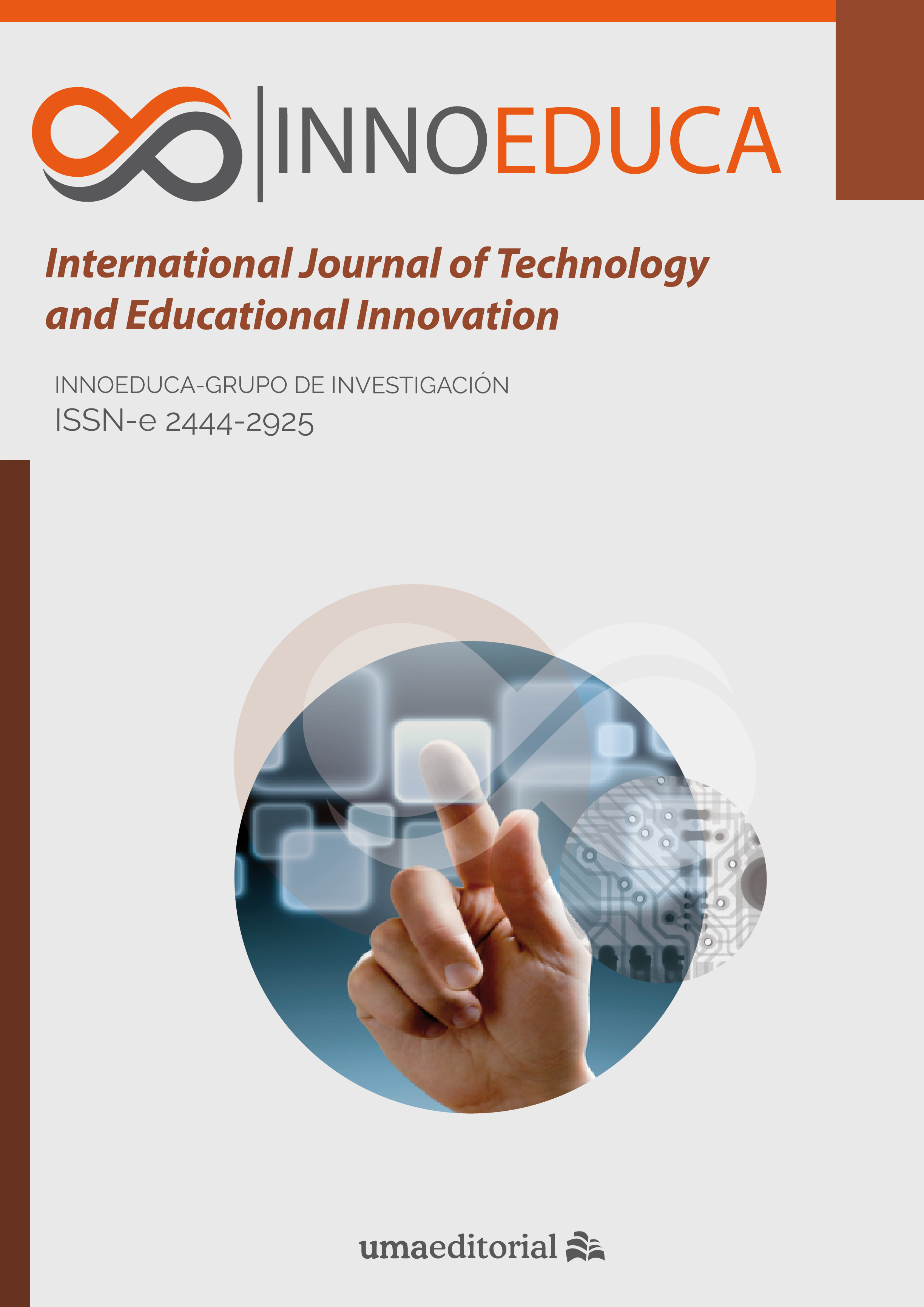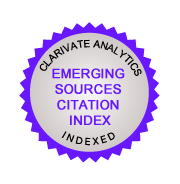The platforms of digital teaching materials in Early Childhood Education: are they adapted to students’ characteristics?
DOI:
https://doi.org/10.24310/innoeduca.2021.v7i2.12267Keywords:
Early Childhood Education, Digital Platforms, Educational Resources., Early Childhood Education, Digital platforms, educational resourcesAbstract
In recent years, the presence of technology in the classrooms of our educational centers has increased and the Early Childhood Educational stage has not been left out of this event. This reality aroused interest to develop the I+D+I project “Digital Didactic Materials for Early Childhood Education. Analysis and proposals for use at school and at home. Digit@l Childhood” in which this article is framed. The objective of this work is to make a comparison between five platforms of digital didactic materials of diverse natures (institutional, editorial and free access) of Galicia. For this, we applied an evaluation guide that focuses on the technological, pedagogical, and socio-communicational characteristics of these platforms. In the same way, it is taken into account whether these resources know the characteristics, needs and interests of the students of this educational stage to which they are intended. Throw this analysis we conclude that the platforms are adapting them to the reality of our society, but in a very gradual and superficial way.
Downloads
Metrics
Publication Facts
Reviewer profiles N/A
Author statements
Indexed in
-
—
- Academic society
- N/A
- Publisher
- Universidad de Málaga
References
Altun, S. (2017). The effect of cooperative learning on students’ achievement and views on the science and technology course. International Electronic Journal of Elementary Education, 7(3), 451-468.
Area, M. (2003). De los web educativos al material educativo web. Comunicación y Pedagogía, 188, 32-38.
Area, M. (2019). Guía para la producción y uso de materiales didácticos digitales: recomendaciones de buenas prácticas para productores, profesorado y familias. http://edullab.webs.ull.es/wordpress/guia-bbpp-mdd/
Castro-Rodríguez, M.M., De Castro, A., & Hernández, V.M. (2017). Análisis de plataformas educativas digitales comerciales españolas destinadas a Educación Primaria. Revista Latinoamericana de Tecnología Educativa, 16(2), 49-62. https://doi.org/10.17398/1695-288X.16.2.49
Chaudron, S., Di Giogia, R., & Gemo, M. (2018). Young children (‘-8) and digital technology, a qualitative study across Europe. JRC Science for Policy Report https://doi.org/10.2760/294383
Decreto 330/2009, de 4 de junio, por el que se establece el currículo de la educación infantil en la Comunidad Autónoma de Galicia. Xunta de Galicia. Diario Oficial de Galicia, 121, de 23 de junio de 2009, pp. 10773-10799. https://politicasocial.xunta.gal/sites/w_polso/files/arquivos/normativa/decreto_330_2009_cas.pdf
Fernández, J.C., Fernández, M.C., & Cebreiro, B. (2016). Competencias en TIC del profesorado en Galicia: variables que inciden en las necesidades formativas. Innovación Educativa, (26), 215-231.
Flórez, M., Aguilar, A.J., Hernández, Y.K., Salazar, J.P., Pinillos, J.A., & Pérez, C.A. (2017). Sociedad del conocimiento, las TIC y su influencia en la educación. Revista Espacios, 38(35), e39. http://hdl.handle.net/20.500.12442/1770
Gabarda, V., Rodríguez, N., & González, C. (2021). Los materiales didácticos digitales en educación infantil: análisis de repositorios institucionales. Revista Iberoamericana de Educación, 85(1), 61-79. https://doi.org/10.35362/rie8514069
Gonçalves, D. (2015). Competências profissionais e desenvolvimento docente. En J. Machado & J. Matias (Eds.), Professores, escola e município – formar, conhecer e desenvolver (pp. 42-52). UCP.
Gonzales, A. (2016). The contemporary US digital divide: From initial access to technology maintenance. Information, Communication & Society, 19(2), 234-248. https://doi.org/10.1080/136911
González, C.J., Martín, S., & Vega, A. (2018). Portales educativos: la producción de materiales didácticos digitales. @tic Revista d’innovació educativa, (20), 89-97. https://doi.org/10.7203/attic.20.12139
Gottschalk, F. (2019). Impacts of technology use on children: Exploring literature on the brain, cognition and well-being. In OECD Education Working Papers. OECD Publishing. https://dx.doi.org/10.1787/8296464e-en
Gutiérrez, F. (2018). Sobre la nueva ecología de medios en la era digital: hacia un nuevo inventario de efectos. Razón y Palabra, 22(1_100), 237-254. Recuperado de
Hernández, R.M. (2017). Impacto de las TIC en la educación: Retos y Perspectivas. Propósitos y representaciones, 5(1), 325-347. http://dx.doi.org/10.20511/pyr2017.v5n1.149
Hooft, J. (2018). New technologies and 21st century children: Recent trends and outcomes. In OECD Education Working Papers. OECD Publishing. https://dx.doi.org/10.1787/e071a505-en
Maciá, M., & Garreta, J. (2018). Accesibilidad y alfabetización digital: barreras para la integración de las TIC en la comunidad familia/escuela. Revista de Investigación Educativa, 36 (1), 239- 257. https://doi.org/10.6018/rie.36.1.290111
Pérez, R., Mercado, P., Martínez, M., Mena, E., & Partida, J.A. (2018). La sociedad del conocimiento y la sociedad de la información como la piedra angular en la innovación tecnológica educativa. RIDE. Revista Iberoamericana para la Investigación y el Desarrollo Educativo, 8(16), 847-870.https://doi.org/10.23912/ride.v8i16.371
Rodríguez, J., & Area, M. (2019). Resumen Memoria Técnica del Proyecto Infanci@ Digit@l (RTI2018093397-B-100). Los materiales didácticos digitales en la Educación Infantil. Análisis y propuestas para su uso en la escuela y en el hogar. Documento oficial, difusión restringida.
Sosa, M.J., & Valverde, J.V. (2020). Perfiles docentes en el contexto de la transformación digital de la escuela. Bordón. Revista de Pedagogía, 72(1), 151-173. https://doi.org/10.13042/Bordon.2020.72965
Downloads
Published
How to Cite
Issue
Section
License
All contents published by Innoeduca. International Journal of Technology and Educational Innovation are subject to Creative Commons Attribution-Nocomercial-NoDerivatives 4.0 International License, whose complete text can be consulted at https://creativecommons.org/licenses/by-nc-nd/4.0/legalcode. Thus, copying, distribution, public communication, derivative works and commercial use of content are permitted as of the aforementioned issue provided that the source and the author of the text are cited.
It is the responsibility of the authors to obtain the necessary permits for images that are subject to copyright.

This work is licensed under a Creative Commons Attribution-NonCommercial-NoDerivatives 4.0 International License.













242.png)








